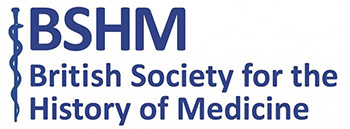
Jenner vaccinating (Gillray) – Courtesy Wellcome Images
On the 14th May 1796 Edward Jenner carried out the first stage of his now famous vaccination experiment and inoculated a young boy named James Phipps with cowpox. To this day Jenner’s name is associated with the discovery of vaccination as a concept, and the worldwide eradication of smallpox. However, there were others who helped light the path to Jenner’s discovery, and even carried out that same experiment decades before Jenner.
Vaccination could not have happened without the development of variolation; the process of inoculating healthy individuals with smallpox matter in order to confer immunity against the disease. It was based on the observations that a primary attack of smallpox often provided a degree of immunity against contracting the disease again in the future. It was introduced to Britain in the early eighteenth century by Lady Mary Wortley-Montagu, who had come across the concept of ‘smallpox parties’ whilst living in Turkey. Following the successful variolation of her own son, she also had her daughter inoculated with smallpox matter in 1721 by the surgeon Charles Maitland. Others soon followed suit, including a royal variolation when George II had his two daughters inoculated with smallpox, at the request of his wife Caroline, Princess of Wales.
The concept gradually spread across the country, but it was not until it reached the county of Suffolk and the ears of a young surgeon named Robert Sutton, that it truly took off. Sutton advertised variolation as a service, including bed and board with the added incentive of ‘tea, wine, fish and fowl’ all for a monthly fee. Gradually inoculation houses started to appear across the country, inspired by the likes of Sutton and his business enterprise.
It was at one of these inoculation houses that in 1768 John Fewster, a Gloucestershire surgeon and apothecary, recognised that a great number of patients could not be infected with smallpox. On enquiry he discovered that they had all previously been infected with cowpox. He made note of this and communicated it to a small medical society of which he as a member at the time. It just so happened that Edward Jenner was also present at this society meeting, as a young apprentice to another local surgeon named Daniel Ludlow. Fewster was a strong supporter of the Suttonian method of variolation and he did not recognise the importance or see the need at the time for the development of inoculation with cowpox.
It would be wrong to talk about the history of vaccination without mentioning Benjamin Jesty (1736-1816), a dairy farmer from Yetminster, in Dorset. Not only did he recognise the protective effect that cowpox had over smallpox, but he also went so far as to vaccinate his wife and children with cowpox in 1774, at least twenty years prior to Jenner’s famous experiment. Furthermore he tested his vaccination trial in 1789 when his two sons were variolated by their local doctor and they did not go on to exhibit any signs of a reaction. Jesty unfortunately did not go on to publish his results, and perhaps due to the public outrage that ensued when the locals discovered that he had inoculated his family with animal matter, did not go out of his way to publicise them either. However, his experiment did not go unrecognised, and he was invited to attend George Pearson’s Original Vaccine Pock Institute in 1805. The physicians at that institute decided that Jesty’s experiment had pre-empted Jenner’s, and they awarded him with a testimonial scroll stating just this.
It is evident that the history of vaccination is more complex than the well-known story of Jenner, the milkmaid and the cow. The concept of cowpox being protective against smallpox was reportedly widely known throughout the dairy country in England and across the continent in Germany. However, it cannot be disputed that Jenner was the only one to make this fact publicly known and to recognise the importance that this discovery could have in the fight against smallpox. It was his determination and dedication to the subject which subsequently led to the World Health Organisation declaring the eradication of smallpox on 8th May 1980.
More can be discovered about this fascinating subject by paying a visit to Dr Jenner’s House, Museum and Garden in Berkeley, Gloucestershire. https://jennermuseum.com/
Roy Porter, ‘The Prevention of Smallpox’, in The Greatest Benefit to Mankind. A Medical History from Antiquity to the Present.(London: HarperCollins, 1999) 275-6
S.L. Kotar and J.E. Gessler, Smallpox: A History (North Carolina: McFarland & Company, 2013),18
Robert Jesty and Gareth Williams, ‘Who invented vaccination’, Malta Medical Journal, 23, 2 (2011) 29-32
Lydia Thurston and Gareth Williams, ‘An examination of John Fewster’s role in the discovery of smallpox vaccination’, J R Coll Physicians Edinb,45 (2015) 173-179
Lydia Thurston






